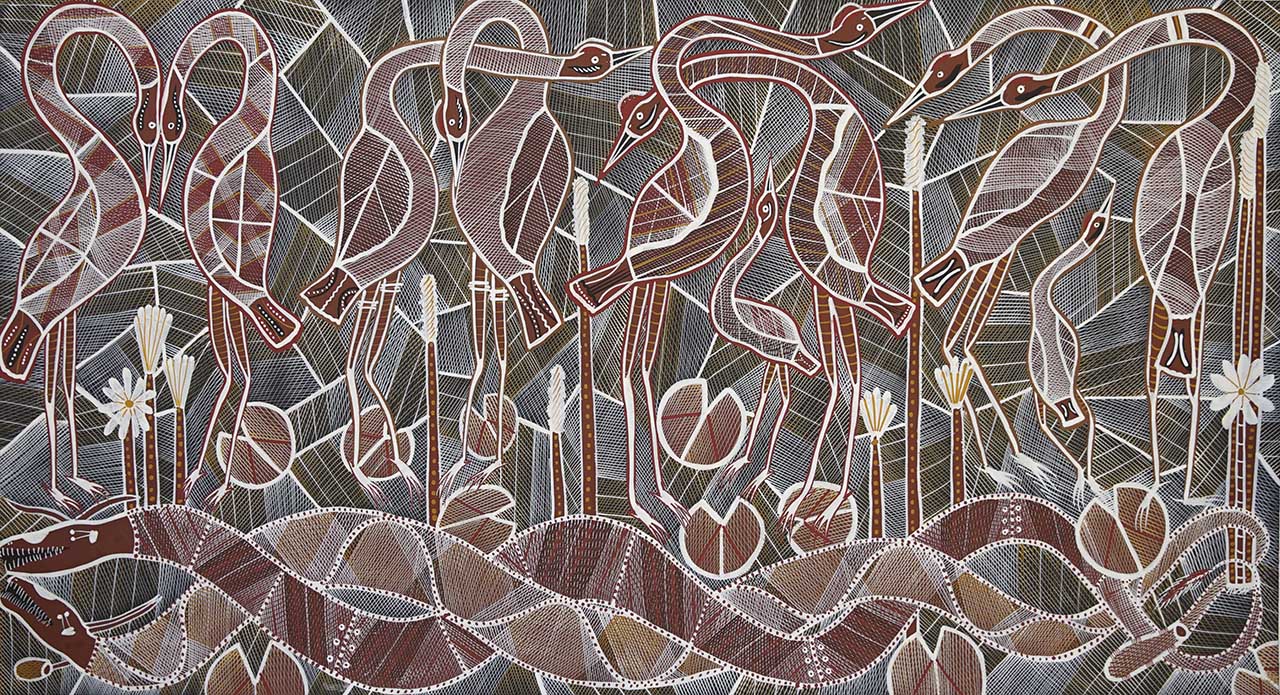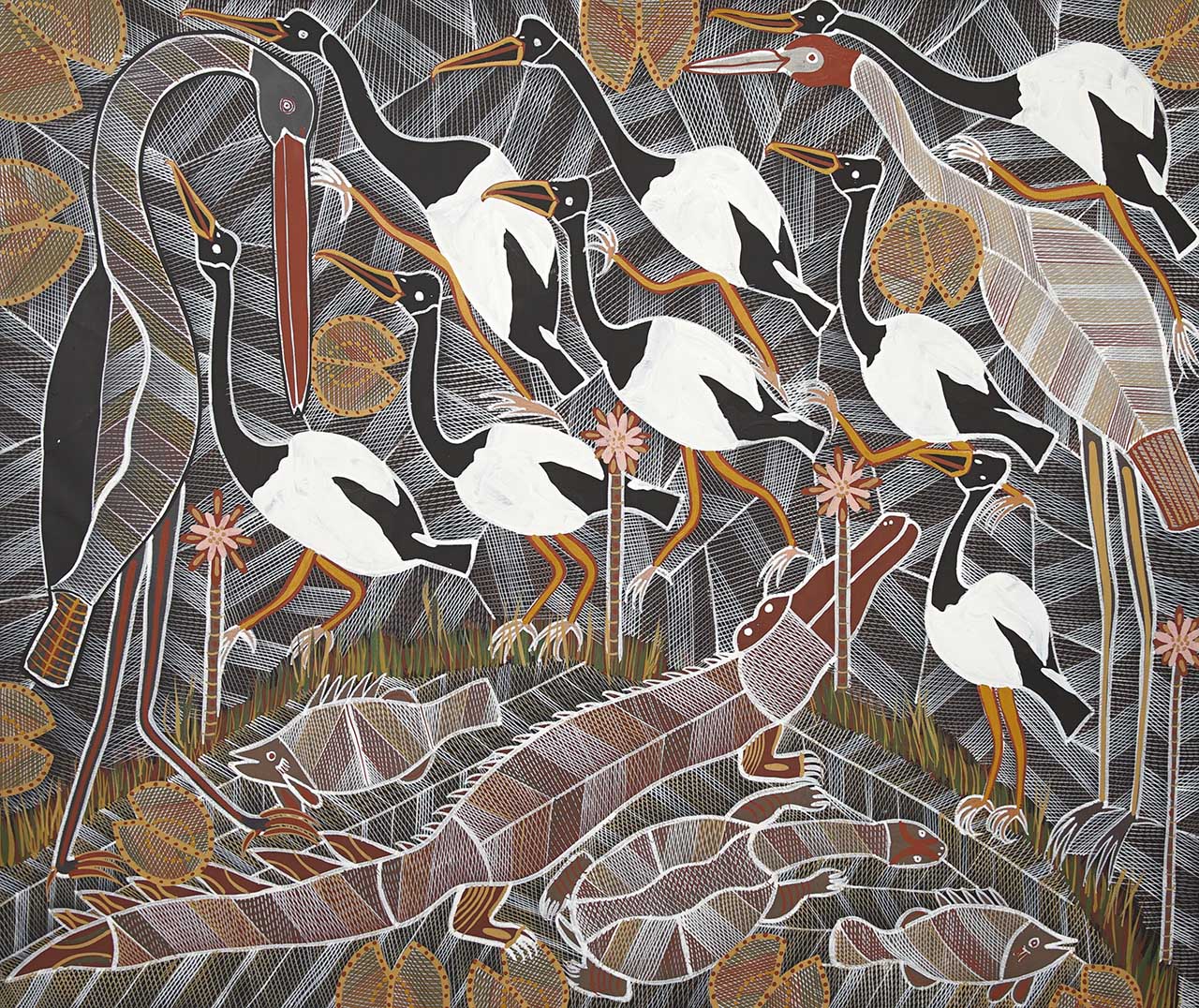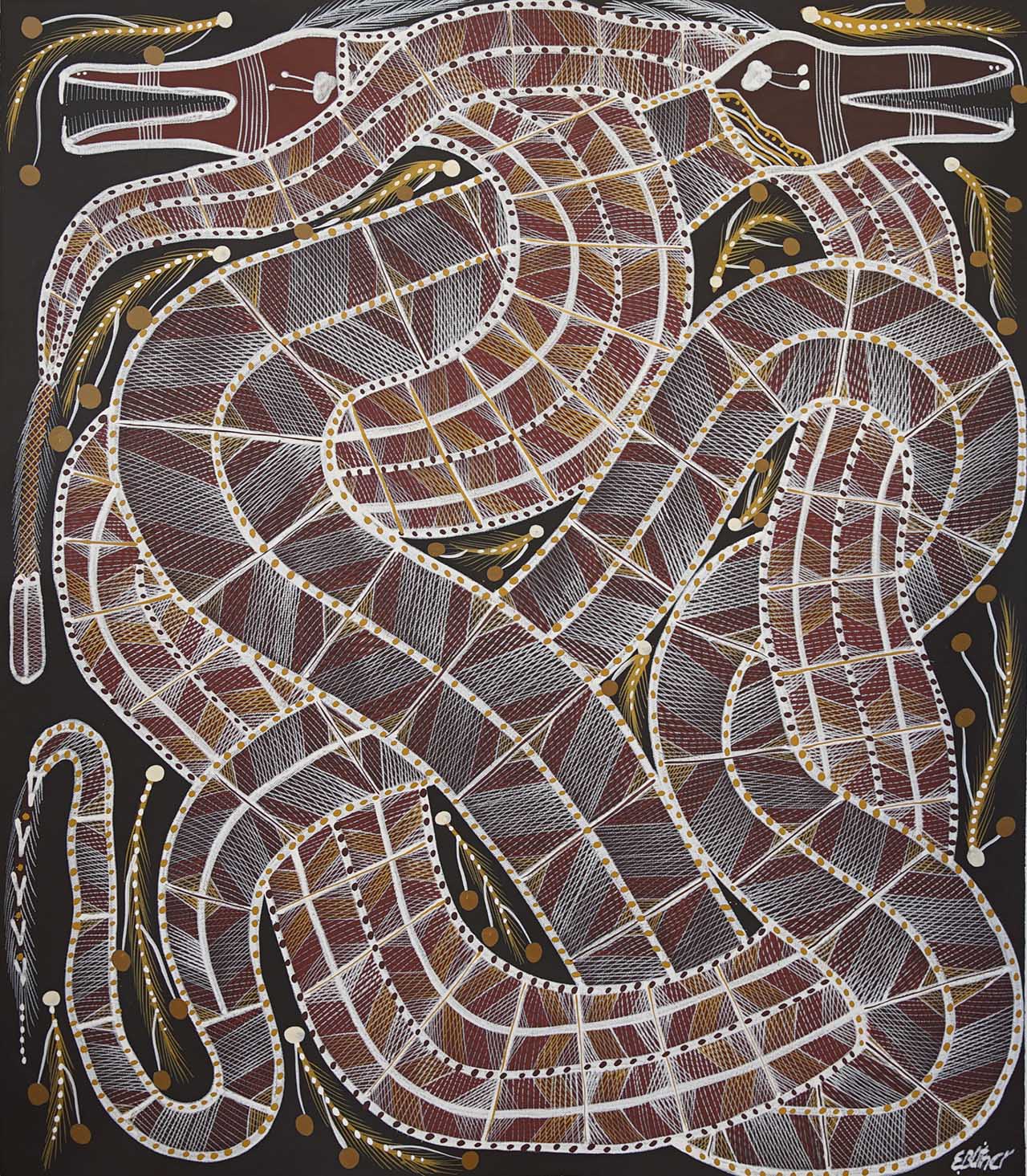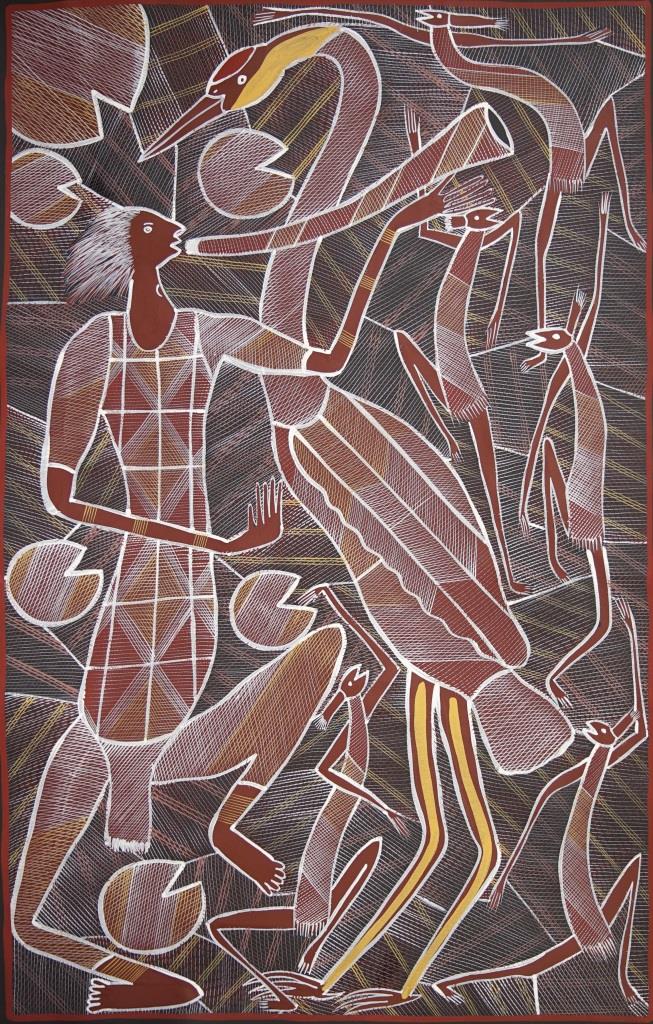Wet Season Billabongs Brought To Life By Edward Blitner
Edward Blitner has created an exhibition of works under the title, Freshwater Billabongs. It shows the great effervescence of life after the wet season in Kakadu and Arnhem Land. At that time all the swamps and the freshwater billabongs fill up and they're full of life. Here are images of water lilies, brolgas, goannas, crocodiles and Water Serpents. There are fish and kangaroos, the whole cross-section of life. Edward Blitner specialises in an exquisite way of applying rarrk or cross-hatching to his imagery. The effect is to create a very delicate image that focuses on the liveliness and intricacy of the eco world found within the billabongs.
This painting has the title, 'Brolgas with Yingana and Ngalyod, Rainbow Serpents'. Ngalyod is a mythological Rainbow Snake story that is one of the great creation stories of Arnhem Land. The artist often refers to the power of the water snake to bring the cyclical rains that fill the water holes. It is the whole seasonal refurbish of the landscape and of the animal population. You can see the brolgas nesting on the billabongs. There are lily flowers bursting out of the water. It's a scene of rejuvenation in the landscape and beautifully realised by the artist.
One of the outstanding reactions to the paintings that Blitner has created for this exhibition has certainly been the magpie geese paintings. These extraordinary birds with their black and white profiles stand out against the fine cross-hatching work that the artist lays over the surface of the water and the other animals. There's an energy and liveliness to these paintings. It is just so unusual to see the stark black and white image of the magpie geese surrounded entirely by all the other animals.
There's cranes and brolga and crocodiles, turtles and fish and barramundi. They are almost fighting for space on the canvas, there's so much going on. This painting has had a tremendously positive response from everyone who's come to see it.
Edward Blitner has done several paintings that embody the mythological story of the Rainbow Snakes, Yingarna and Ngalyod. This is the story of how the Rainbow Snake came to that part of the country. Ngalyod was the son of Yingarna and he went on to become the kind of Ancestral Being that is the spirit force for all of the water life in Arnhem Land. That is the entire story of survival in that country where the sandstone landscape is dry for six months of the year. And then when the rains start falling in the summer months it completely fills up the low-lying waterways and this totally transforms the life cycle there.
Blitner has painted the two entwining bodies of the Rainbow Snakes, with the whole design of their bodies covered in Rarrk cross-hatching style. The artists uses just the traditional ochre colours- red, yellow and white against a black background. It's a beautiful composition that captures the complex nature of that Creation story that is at the essence of life in Arnhem Land.
Some of Edward Blitner's paintings feature the Mimih figures which are traditional spirit figures found on cave paintings and rock art galleries. In this painting called Brolga Dreaming, the artist has put an image of a man playing the didgeridoo with a brolga at the centre of the painting. He has then surrounded that man with Mimih figures. These have a long history in Arnhem Land art. The Mimih spirit figures brought knowledge and skills to humankind. They were the first to use all the basic skills and activities that they then taught to human beings. The humans were taught everything about hunting, lighting fires, management of the land and respect for totems. This all emanates from the life of the Mimih figures. This painting is one of the few that show a human figure. He is a musician playing the didgeridoo and he is surrounded by the Mimih spirits.
People comment on the fact that these paintings are so delicately created by the artist. One of the significant features in the paintings of Edward Blitner is that he creates these very precise lines, all painted by hand with a brush. Traditionally the Rarrk paintings that we see on bark paintings and on rock surfaces were done with the use of a reed. This is like a long straw, cut so that it tapers down to just one long fibre at the end. The reed fibre is laid in the paint and then placed down on the painting, just rolled down onto the surface of the painting to create a single straight line. This is the traditional way that it was done and Blitner has refined this to use a brush to create incredibly fine Rarrk cross-hatching.




